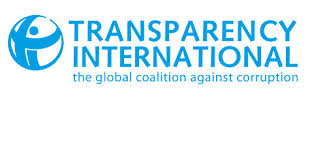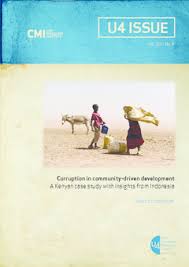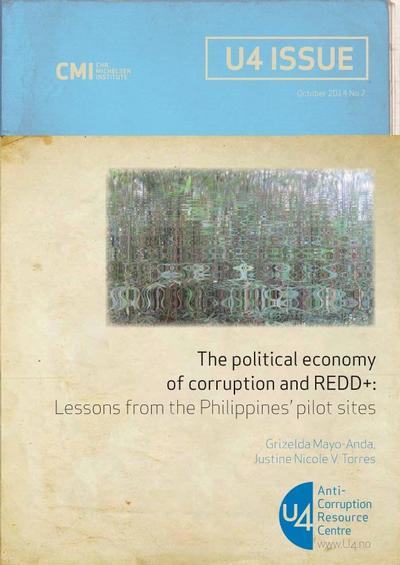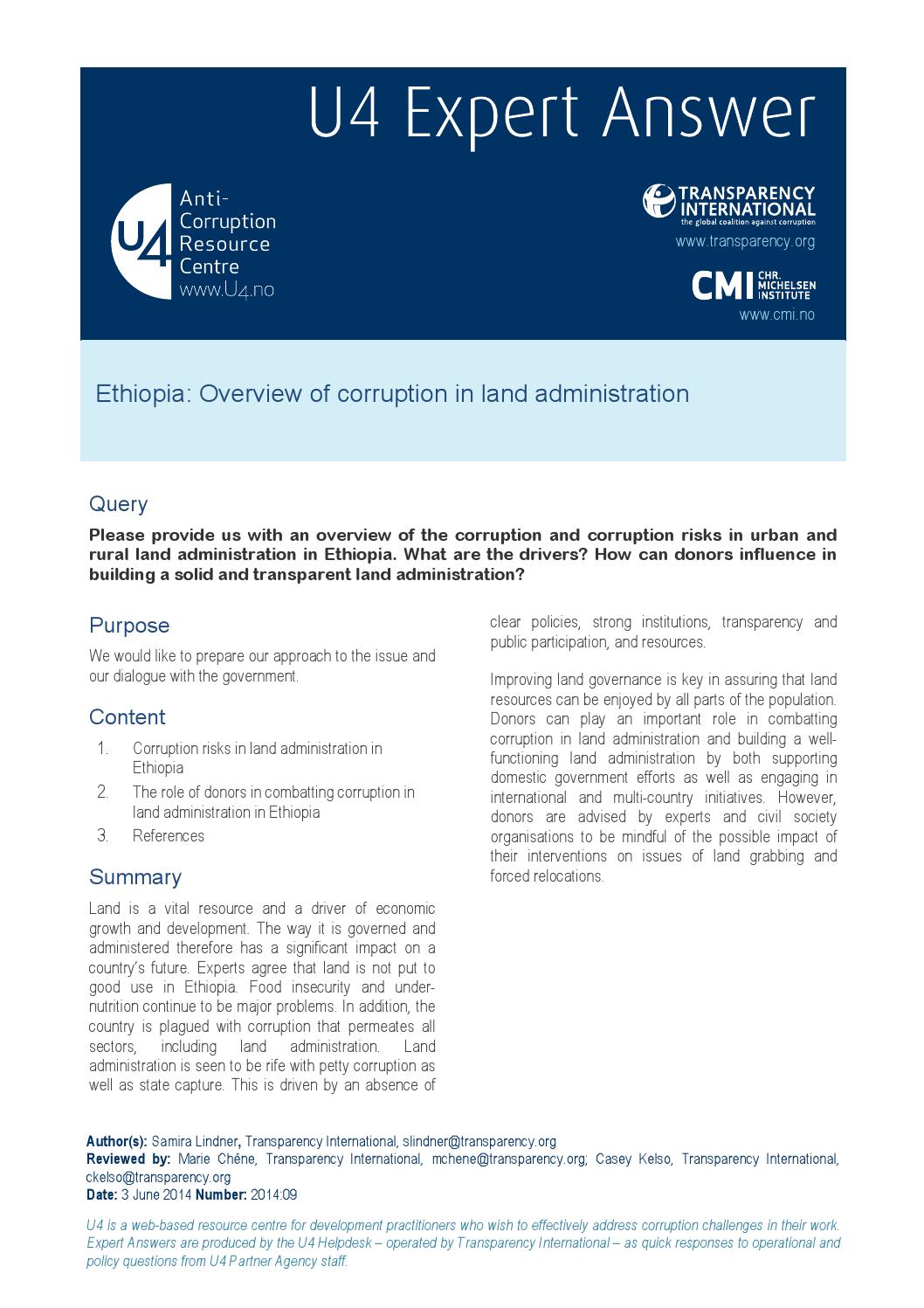Reassessing Kenya's land reform
This article discusses issues surrounding land reform in Kenya. As the nature of land reforms is as yet undecided, disparate suggestions and proposals are being considered. These include:Land Ownership Ceilings. There are vast inequalities in land ownership. Indeed, non-indigenous Kenyans or corporations that are not significantly Kenyan own the largest consolidated quantities of Kenyan lands. Ceilings on land ownership, would encourage more equitable distribution of land, perhaps facilitating more effective production and a reduction in food security problems.
Land Governance in Post-Conflict Settings: Interrogating Decision-Making by International Actors
Humanitarian and development organizations working in conflict-affected settings have a particular responsibility to do no harm and contribute to the wellbeing of the population without bias. The highly complex, politicized realities of work in conflict- and post-conflict settings often require quick, pragmatic and results-oriented decisions, the foundations of which remain frequently implicit. Such decisions might follow an intrinsic logic or situational pragmatism rather than intensive deliberation.
Understanding Land Corruption as a Basis for Prevention
From forced eviction to loss of livelihood, social status, savings and even life, land corruption in Africa has serious and far-reaching consequences. Such corruption comes in many forms, and it must be understood – along with the factors that enable it – before it can be tackled.
What is Land Corruption?
For people around the world, land is more than a commodity to be bought and sold, de
LAND AND CORRUPTION IN SUB-SAHARAN AFRICA
Land is a vital resource that sustains livelihoods across Sub-Saharan Africa, but also one that is heavily prone to corruption. Every second citizen in Africa has been affected by land corruption in recent years, according to a study by Transparency International.
Preventing corruption in community mineral beneficiation schemes
This paper analyses patterns of corruption and corruption risks related to community mineral beneficiation schemes (CMBSs) that distribute benefits funded by mineral revenues to communities. It analyses insights from existing scholarship on CMBSs, evidence from seven cases of corruption, and lessons from guidance documents on reducing corruption in the mining value chain. The aim of the paper is to stimulate debate and further research about the suitability of anti-corruption strategies for CMBSs.
Corruption risks and mitigation measures in land administration
Corruption in land administration has significant societal costs, and can have a major effect on the livelihoods of people worldwide. Corruption in this sector can reduce peoples’ access to land, and harm the livelihoods of small-scale producers, agricultural labourers, indigenous communities and landless rural and urban poor. Women, young people and ethnic minorities suffer most by having their access to land hindered by corruption.
Digitising the landscape: Technology to improve integrity in natural resource management
Many information technology initiatives have emerged in recent years with the aim of improving natural resource management. These take a variety of technological forms designed either to directly curb corruption in resource extraction and production, or to enhance information flows, facilitate citizen participation, and hold specific actors accountable. Donors can play a role in connecting the divide between development practitioners, technologists, and researchers by supporting the use of tools in programs and evaluations.
Corruption in community-driven development. A Kenyan case study with insights from Indonesia
Community-driven development is a strategy for empowering people to choose their own priorities, project leaders, and monitoring. Many believe that this model results in lower corruption rates. We look at what happened in the Arid Lands Project in Kenya and a community-development project in Indonesia. These projects had strikingly different corruption rates, even though the countries had similar corruption perception rates at project startup. Find out which design elements may account for the differences in corruption.
The political economy of corruption and REDD+: Lessons from the Philippines’ pilot sites
Corruption is a continuing feature of the Philippines’ natural resource sectors. Given keen interest in the country’s REDD+ potential, it is useful to consider corruption risks related to REDD+ from a political economy perspective. This U4 Issue draws on fieldwork from two REDD+ pilot sites to assess current governance and anti-corruption safeguards related to benefit-sharing, land tenure rights for indigenous peoples, and private sector involvement. Many anti-corruption actions are in place in the pilot sites, but they are weakly embedded in social relations at the local level.
Ethiopia: Overview of corruption in land administration
mproving land governance is key in assuring that land resources can be enjoyed by all parts of the population. Donors can play an important role in combatting corruption in land administration and building a well-functioning land administration by both supporting domestic government efforts as well as engaging in international and multi-country initiatives. However, donors are advised by experts and civil society organisations to be mindful of the possible impact of their interventions on issues of land grabbing and forced relocations.











